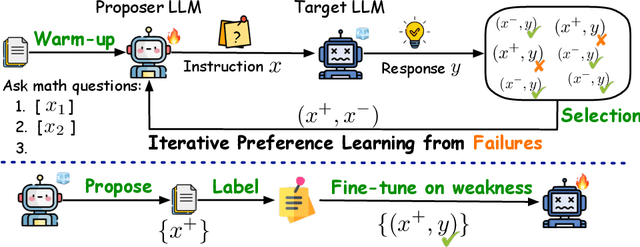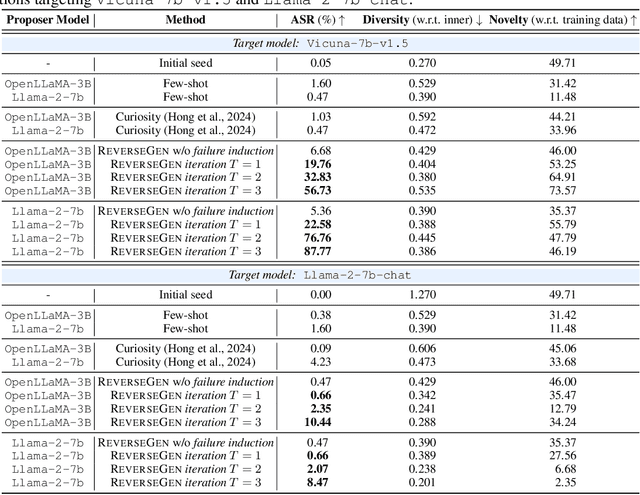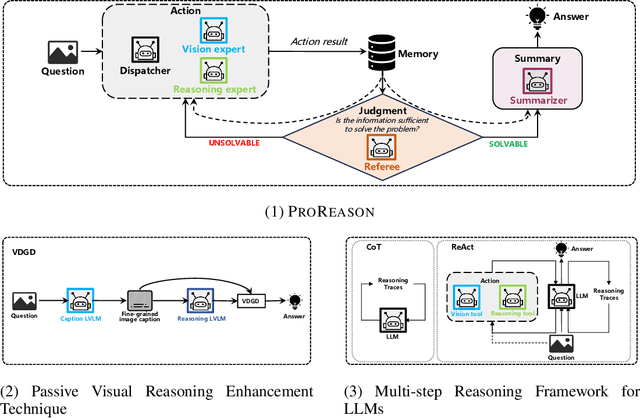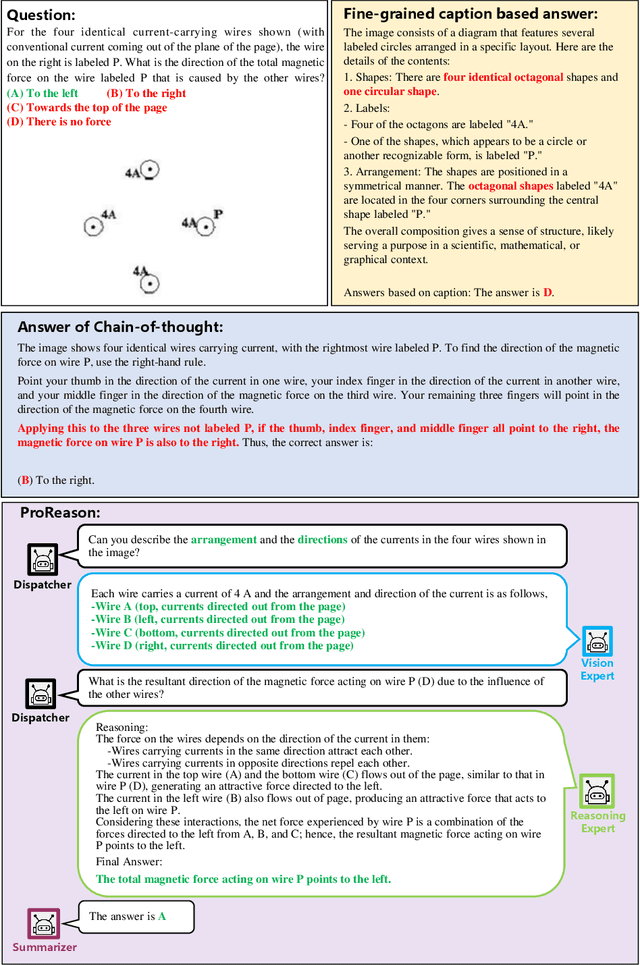Jiahui Gao
TreeSynth: Synthesizing Diverse Data from Scratch via Tree-Guided Subspace Partitioning
Mar 21, 2025Abstract:Model customization requires high-quality and diverse datasets, but acquiring such data remains challenging and costly. Although large language models (LLMs) can synthesize training data, current approaches are constrained by limited seed data, model bias and insufficient control over the generation process, resulting in limited diversity and biased distribution with the increase of data scales. To tackle this challenge, we present TreeSynth, a tree-guided subspace-based data synthesis framework that recursively partitions the entire data space into hierar-chical subspaces, enabling comprehensive and diverse scaling of data synthesis. Briefly, given a task-specific description, we construct a data space partitioning tree by iteratively executing criteria determination and subspace coverage steps. This hierarchically divides the whole space (i.e., root node) into mutually exclusive and complementary atomic subspaces (i.e., leaf nodes). By collecting synthesized data according to the attributes of each leaf node, we obtain a diverse dataset that fully covers the data space. Empirically, our extensive experiments demonstrate that TreeSynth surpasses both human-designed datasets and the state-of-the-art data synthesis baselines, achieving maximum improvements of 45.2% in data diversity and 17.6% in downstream task performance across various models and tasks. Hopefully, TreeSynth provides a scalable solution to synthesize diverse and comprehensive datasets from scratch without human intervention.
Implicit Search via Discrete Diffusion: A Study on Chess
Feb 27, 2025Abstract:In the post-AlphaGo era, there has been a renewed interest in search techniques such as Monte Carlo Tree Search (MCTS), particularly in their application to Large Language Models (LLMs). This renewed attention is driven by the recognition that current next-token prediction models often lack the ability for long-term planning. Is it possible to instill search-like abilities within the models to enhance their planning abilities without relying on explicit search? We propose DiffuSearch , a model that does \textit{implicit search} by looking into the future world via discrete diffusion modeling. We instantiate DiffuSearch on a classical board game, Chess, where explicit search is known to be essential. Through extensive controlled experiments, we show DiffuSearch outperforms both the searchless and explicit search-enhanced policies. Specifically, DiffuSearch outperforms the one-step policy by 19.2% and the MCTS-enhanced policy by 14% on action accuracy. Furthermore, DiffuSearch demonstrates a notable 30% enhancement in puzzle-solving abilities compared to explicit search-based policies, along with a significant 540 Elo increase in game-playing strength assessment. These results indicate that implicit search via discrete diffusion is a viable alternative to explicit search over a one-step policy. All codes are publicly available at \href{https://github.com/HKUNLP/DiffuSearch}{https://github.com/HKUNLP/DiffuSearch}.
Contrast Similarity-Aware Dual-Pathway Mamba for Multivariate Time Series Node Classification
Nov 19, 2024Abstract:Multivariate time series (MTS) data is generated through multiple sensors across various domains such as engineering application, health monitoring, and the internet of things, characterized by its temporal changes and high dimensional characteristics. Over the past few years, many studies have explored the long-range dependencies and similarities in MTS. However, long-range dependencies are difficult to model due to their temporal changes and high dimensionality makes it difficult to obtain similarities effectively and efficiently. Thus, to address these issues, we propose contrast similarity-aware dual-pathway Mamba for MTS node classification (CS-DPMamba). Firstly, to obtain the dynamic similarity of each sample, we initially use temporal contrast learning module to acquire MTS representations. And then we construct a similarity matrix between MTS representations using Fast Dynamic Time Warping (FastDTW). Secondly, we apply the DPMamba to consider the bidirectional nature of MTS, allowing us to better capture long-range and short-range dependencies within the data. Finally, we utilize the Kolmogorov-Arnold Network enhanced Graph Isomorphism Network to complete the information interaction in the matrix and MTS node classification task. By comprehensively considering the long-range dependencies and dynamic similarity features, we achieved precise MTS node classification. We conducted experiments on multiple University of East Anglia (UEA) MTS datasets, which encompass diverse application scenarios. Our results demonstrate the superiority of our method through both supervised and semi-supervised experiments on the MTS classification task.
Forewarned is Forearmed: Leveraging LLMs for Data Synthesis through Failure-Inducing Exploration
Oct 22, 2024



Abstract:Large language models (LLMs) have significantly benefited from training on diverse, high-quality task-specific data, leading to impressive performance across a range of downstream applications. Current methods often rely on human-annotated data or predefined task templates to direct powerful LLMs in synthesizing task-relevant data for effective model training. However, this dependence on manually designed components may constrain the scope of generated data, potentially overlooking critical edge cases or novel scenarios that could challenge the model. In this paper, we present a novel approach, ReverseGen, designed to automatically generate effective training samples that expose the weaknesses of LLMs. Specifically, we introduce a dedicated proposer trained to produce queries that lead target models to generate unsatisfactory responses. These failure-inducing queries are then used to construct training data, helping to address the models' shortcomings and improve overall performance. Our approach is flexible and can be applied to models of various scales (3B, 7B, and 8B). We evaluate ReverseGen on three key applications (safety, honesty, and math), demonstrating that our generated data is both highly effective and diverse. Models fine-tuned with ReverseGen-generated data consistently outperform those trained on human-annotated or general model-generated data, offering a new perspective on data synthesis for task-specific LLM enhancement.
ProReason: Multi-Modal Proactive Reasoning with Decoupled Eyesight and Wisdom
Oct 18, 2024



Abstract:Large vision-language models (LVLMs) have witnessed significant progress on visual understanding tasks. However, they often prioritize language knowledge over image information on visual reasoning tasks, incurring performance degradation. To tackle this issue, we first identify the drawbacks of existing solutions (i.e., insufficient and irrelevant visual descriptions, and limited multi-modal capacities). We then decompose visual reasoning process into two stages: visual perception (i.e., eyesight) and textual reasoning (i.e., wisdom), and introduce a novel visual reasoning framework named ProReason. This framework features multi-run proactive perception and decoupled vision-reasoning capabilities. Briefly, given a multi-modal question, ProReason iterates proactive information collection and reasoning until the answer can be concluded with necessary and sufficient visual descriptions. Notably, the disassociation of capabilities allows seamless integration of existing large language models (LLMs) to compensate for the reasoning deficits of LVLMs. Our extensive experiments demonstrate that ProReason outperforms both existing multi-step reasoning frameworks and passive peer methods on a wide range of benchmarks for both open-source and closed-source models. In addition, with the assistance of LLMs, ProReason achieves a performance improvement of up to 15% on MMMU benchmark. Our insights into existing solutions and the decoupled perspective for feasible integration of LLMs illuminate future research on visual reasoning techniques, especially LLM-assisted ones.
Beyond Autoregression: Discrete Diffusion for Complex Reasoning and Planning
Oct 18, 2024



Abstract:Autoregressive language models, despite their impressive capabilities, struggle with complex reasoning and long-term planning tasks. We introduce discrete diffusion models as a novel solution to these challenges. Through the lens of subgoal imbalance, we demonstrate how diffusion models effectively learn difficult subgoals that elude autoregressive approaches. We propose Multi-granularity Diffusion Modeling (MDM), which prioritizes subgoals based on difficulty during learning. On complex tasks like Countdown, Sudoku, and Boolean Satisfiability Problems, MDM significantly outperforms autoregressive models without using search techniques. For instance, MDM achieves 91.5\% and 100\% accuracy on Countdown and Sudoku, respectively, compared to 45.8\% and 20.7\% for autoregressive models. Our work highlights the potential of diffusion-based approaches in advancing AI capabilities for sophisticated language understanding and problem-solving tasks.
CoCA: Regaining Safety-awareness of Multimodal Large Language Models with Constitutional Calibration
Sep 17, 2024



Abstract:The deployment of multimodal large language models (MLLMs) has demonstrated remarkable success in engaging in conversations involving visual inputs, thanks to the superior power of large language models (LLMs). Those MLLMs are typically built based on the LLMs, with an image encoder to process images into the token embedding space of the LLMs. However, the integration of visual modality has introduced a unique vulnerability: the MLLM becomes susceptible to malicious visual inputs and prone to generating sensitive or harmful responses, even though the LLM has been trained on textual dataset to align with human value. In this paper, we first raise the question: ``Do the MLLMs possess safety-awareness against malicious image inputs?". We find that after adding a principle that specifies the safety requirement into the input of the MLLM, the model's safety awareness becomes boosted. This phenomenon verifies the existence of MLLM's safety-awareness against image inputs, it is only weakened by the modality gap. We then introduce a simple yet effective technique termed CoCA, which amplifies the safety-awareness of the MLLM by calibrating its output distribution. Our proposed strategy helps the model reclaim its original safety awareness without losing its original capabilities. We verify the effectiveness of our approach on both multimodal safety and understanding benchmarks.
Jailbreaking as a Reward Misspecification Problem
Jun 20, 2024Abstract:The widespread adoption of large language models (LLMs) has raised concerns about their safety and reliability, particularly regarding their vulnerability to adversarial attacks. In this paper, we propose a novel perspective that attributes this vulnerability to reward misspecification during the alignment process. We introduce a metric ReGap to quantify the extent of reward misspecification and demonstrate its effectiveness and robustness in detecting harmful backdoor prompts. Building upon these insights, we present ReMiss, a system for automated red teaming that generates adversarial prompts against various target aligned LLMs. ReMiss achieves state-of-the-art attack success rates on the AdvBench benchmark while preserving the human readability of the generated prompts. Detailed analysis highlights the unique advantages brought by the proposed reward misspecification objective compared to previous methods.
Mixture of insighTful Experts : The Synergy of Thought Chains and Expert Mixtures in Self-Alignment
May 01, 2024



Abstract:As the capabilities of large language models (LLMs) have expanded dramatically, aligning these models with human values presents a significant challenge, posing potential risks during deployment. Traditional alignment strategies rely heavily on human intervention, such as Supervised Fine-Tuning (SFT) and Reinforcement Learning from Human Feedback (RLHF), or on the self-alignment capacities of LLMs, which usually require a strong LLM's emergent ability to improve its original bad answer. To address these challenges, we propose a novel self-alignment method that utilizes a Chain of Thought (CoT) approach, termed AlignCoT. This method encompasses stages of Question Analysis, Answer Guidance, and Safe Answer production. It is designed to enable LLMs to generate high-quality, safe responses throughout various stages of their development. Furthermore, we introduce the Mixture of insighTful Experts (MoTE) architecture, which applies the mixture of experts to enhance each component of the AlignCoT process, markedly increasing alignment efficiency. The MoTE approach not only outperforms existing methods in aligning LLMs with human values but also highlights the benefits of using self-generated data, revealing the dual benefits of improved alignment and training efficiency.
Learning From Correctness Without Prompting Makes LLM Efficient Reasoner
Mar 28, 2024



Abstract:Large language models (LLMs) have demonstrated outstanding performance across various tasks, yet they still exhibit limitations such as hallucination, unfaithful reasoning, and toxic content. One potential approach to mitigate these issues is learning from human or external feedback (e.g. tools). In this paper, we introduce an intrinsic self-correct reasoning framework for LLMs that eliminates the need for human feedback, external tools, and handcraft prompts. The proposed framework, based on a multi-step reasoning paradigm \textbf{Le}arning from \textbf{Co}rrectness (\textsc{LeCo}), improves reasoning performance without needing to learn from errors. This paradigm prioritizes learning from correct reasoning steps, and a unique method to measure confidence for each reasoning step based on generation logits. Experimental results across various multi-step reasoning tasks demonstrate the effectiveness of the framework in improving reasoning performance with reduced token consumption.
 Add to Chrome
Add to Chrome Add to Firefox
Add to Firefox Add to Edge
Add to Edge